Sensors already equip a range of tools to enhance monitoring capacity for conservation. Some of the higher bandwidth technologies, like camera traps and acoustic monitoring systems, have been essential elements of the conservation toolkit for decades, and thus have enough users that we've created dedicated WILDLABS groups to address them. But a whole range of lower bandwidth sensors beyond these core technologies are being increasingly integrated into conservation monitoring systems, and offer rich new insights into the wildlife and ecosystems we're all working to protect. As with many technologies, cost and access have historically been challenges to the adoption of new sensors, but with low-cost and open-source solutions on the rise, we're excited to see what the future of this space holds.
Getting Started with Sensors:
- Watch Shah Selbe's Tech Tutors episode on scaling FieldKit, an open-source conservation sensor toolbox, from a project to a successful conservation tech product.
- Check out our Virtual Meetup about Low-Cost, Open-Source Solutions in conservation tech, including a talk by Alasdair Davies on the Arribada Initiative's work with thermal sensors in early warning systems.
- For a more in-depth introduction, watch the first video in our datalogger mini-series: Freaklabs: How do I get started with Arduino?
In this group, you'll meet others who are using and innovating diverse sensors in their work, discuss ways to make sensors more effective & accessible for conservationists, learn about what sensors are already helping us accomplish in the field, and have the opportunity to ask and answer questions. Join this group to get started!
Header image: Emma Vogel, University of Tromsø
Systems Engineer at Edge Impulse, experiencce with hands-on edge machine learning for wildlife conservation
- 1 Resources
- 2 Discussions
- 5 Groups
- 0 Resources
- 4 Discussions
- 7 Groups
Western Sydney University
Zoologist



- 0 Resources
- 35 Discussions
- 3 Groups
- 0 Resources
- 0 Discussions
- 9 Groups
- @EvelyneNgugi
- | she/her
Environmentalist and AI Tutor
- 0 Resources
- 0 Discussions
- 12 Groups
- @dhruv
- | He/Him
- 0 Resources
- 2 Discussions
- 5 Groups
Managing Director and Founder, Encounter Solutions Ltd.

- 0 Resources
- 1 Discussions
- 5 Groups
- @Fatuma
- | She/Her
I aim to transition my career towards conservation technology after gaining two years of experience in the tech industry.
- 0 Resources
- 0 Discussions
- 14 Groups
- @jennamkline
- | She/Her
PhD Student @ tOSU, Autonomous Drones for Collective Animal Behavior Studies
- 0 Resources
- 0 Discussions
- 4 Groups
- @hannahrisser
- | She/her
CEH
- 0 Resources
- 0 Discussions
- 10 Groups
- @Mathilde
- | she/her
Natural Solutions
Engineer, I work for a web development company on web application projects for biodiversity conservation. I'm especially interested by camera traps, teledetection and DeepLearning subjects.
- 0 Resources
- 0 Discussions
- 11 Groups
I am an enthusiastic computer scientist, fascinated by animals and I want to collaborate in conservation project ! :D
- 0 Resources
- 1 Discussions
- 3 Groups
The new white paper from Rainforest Connection (RFCx) explores the power of ecoacoustics and AI to monitor biodiversity and track progress towards GBF targets using case studies from around the world.
20 September 2023
Have you ever wanted to continuously film underwater species and their behaviours for up to 2 days at a low cost? Well now you can with this new open-source design guide published in @MethodsEcolEvol! https://...
5 September 2023
Applications are now open for an open capital funding opportunity for projects demonstrating innovative approaches toward environmental monitoring at a sensor or systems-based level.
31 August 2023
Read our interview with Sandra Maryanne, a young conservation tech innovator raised in Taita, Ivarenyi with first-hand experience on the challenges of human-elephant conflict within her community. To address this, she...
7 August 2023
Join us as we count down the WILDLABS community's honorees in the first-ever #Tech4Wildlife Community Choice Awards!
3 August 2023
Exciting opportunity for an experienced biodiversity monitoring expert in ZSL's conservation department
18 July 2023
JICA, Japan’s International Cooperation Agency is seeking a digital partner with a proven track record in conservation technology as we launch a pilot project to test technologies to mitigate human-elephant conflict in...
19 June 2023
Careers
Permanent and Full Time role at the UK Centre for Ecology & Hydrology
8 June 2023
In this Conservation Tech Showcase case study from Fieldkit, you'll learn how accessible tools are revolutionizing environmental monitoring through innovative sensor technology.
23 May 2023
A really interesting article on how the Oregon Zoo's condor team have used sensors and 3D printed eggs to monitor the conditions inside California Condor nests. Because condors are still endangered, every chick is...
19 May 2023
Welcome to our new Conservation Tech Showcase, a series highlighting innovative and impactful projects from outstanding organizations around the world.
11 May 2023
December 2023
event
November 2023
event
16 Products
Recently updated products
117 Products
1 R&D Projects
81 Organisations
Recently updated products
Recently updated R&D Projects
Recently updated organisations
| Description | Activity | Replies | Groups | Updated |
|---|---|---|---|---|
| Hello! I have 2 rescued sulcata tortoises in my care. I would like to put some kind of tracking device on them so I can find them if they... |
|
Sensors | 2 years 9 months ago | |
| On the topic of potential sources for harvested power, and in the category of "out there"... I have spent some considerable (likely too much) time exploring harvesting... |
+21
|
Sensors | 2 years 10 months ago | |
| Hey all!I am Ayush, a core team member of my school's Robotics Club (Center For Innovation, Indian Institute of Technology, Madras). There... |
|
Drones, Sensors, Wildlife Crime, Early Career | 2 years 10 months ago | |
| Dear Community,Together with Hackster.io, Seeed Studio is very happy to jointly organize “IoT Into the Wild Contest for Sustainable Plant... |
|
AI for Conservation, Connectivity, Emerging Tech, Open Source Solutions, Sensors | 2 years 11 months ago | |
| What exact nutrients or parameters are you trying to measure? |
|
Sensors | 2 years 11 months ago | |
| Iray PH35. like a DV . thermal camera. 640*328,35mm. could make videos. 2400 USD, china product, easy ship to Vietnam. 1km is the range to check monkeys... |
+9
|
Sensors | 3 years 1 month ago | |
| Hi, Can you clarify what you mean by "does not work"? If I were to guess, I'd say the firmware temperature compensation tables for the load cell tops out at 40... |
|
Sensors | 3 years 4 months ago | |
| Do you mean the sensor itself (that you're going make a tag out of) or a datalogger that records heart rate (sensor incoporated into a tag already)? Vectronic make some good... |
|
Sensors | 3 years 6 months ago | |
| Dear Wildlabs community, Not a 100 'wild' issue but this is a 'wild' collaboration we have. I'm collaborating... |
|
Sensors | 3 years 6 months ago | |
| Hi @LuciKirkpatrick Aha! A great strategy. I thought it might have been a 'wake on radio' solution, but the overlapping wait time is a really nice solution. Again... |
+8
|
Sensors | 3 years 6 months ago | |
| Hi Wildlabbers! Tomorrow Shah Selbe will be our Tech Tutor and guide us through how to turn an innovative conservation tech... |
|
Open Source Solutions, Sensors | 3 years 6 months ago | |
| Hi Adam, My name is Nicole, I work at Frontier Labs - we also make bioacoustic recorders (BARs) and are based in Brisbane, Australia. Yay for Australian tech! We have been... |
|
Sensors | 3 years 8 months ago |
Leverage Space Technology for Wildlife Protection with the European Space Agency Kick-start Grant
5 July 2017 12:00am
Trialing Audiomoth to detect the hidden threats under the canopies of Belize
 Andrew Hill
and 1 more
Andrew Hill
and 1 more
27 June 2017 12:00am
Biomaker Challenge - up to £1000 support for prototyping sensors and instrumentation related to biology
19 June 2017 3:46pm
19 June 2017 4:03pm
Hi Steph
Sure - we'll have the projects confirmed by 30 June and I can highlight ones that might be of interest!
Jenny
From the Field: Eric Becker and designing sensors for wildlife
22 May 2017 12:00am
acoustics for Human-Wildlife Conflict Prevention, Anti-poaching, and more
27 April 2017 6:43pm
From the Field: Dr Raman Sukumar and Technology Developments Needed to Conserve Elephants
5 April 2017 12:00am
Lasers in the Jungle Somewhere: How Airborne LiDAR Reveals the Structure of Forests
 Phil Wilkes
Phil Wilkes
4 April 2017 12:00am
Heat Maps
2 March 2016 3:18pm
31 March 2017 10:45am
Hi @AdamBloch
I'd like to know more about your setup. I'm monitoring temperatures on a nature reserve using an array of 100 iButton Thermocron temperature sensors. I'm interested in what the benefits of using Arduino and Raspberry Pi might be. I need to collect my sensors in and read through a USB device. Then there's the interpolation and plotting of the data, and I'm particularly interested in how you are filtering and querying your data i.e. 'selectable [time?] range'.
Thanks
31 March 2017 9:49pm
Hi Thomas
We are mapping a very small area in real time. The data rate is controlled by the time it take to read all the DS18B20s. The logger I use in the Octogons is using about 90 sensors and refreshes about every 5 to 15 seconds. The data is store as a CSV in series of files.
Best thing to do is drop me a PM and your number.
Many thanks
Adam
15 Risks and Opportunities for Global Conservation
31 March 2017 12:00am
From the Field: Paul Millhouser and tracking migrating kestrels with low cost, light based geolocators
29 March 2017 12:00am
The Noise Egg: Testing the Effects of Underwater Noise on Aquatic Animals
27 March 2017 12:00am
From the Field: María José Bolgeri and tech to alleviate Puma-Human conflict
22 March 2017 12:00am
Photogrammetry: mapping caves and other environments
19 January 2017 11:46am
8 March 2017 1:49pm
Hi Ollie,
You can do the photogrammetry without a drone. You just need a tripod and a camera. The drone is useful because it can move to locations automatically ensuring that you have correct overlap but in caves you obviously will not have the GPS signal you need for most off the shelf units to navigate.
Thom mentioned to me a device called a Zebedee, which should do what you are hoping for. I don't know anyone who has one though and I'm afraid I don't have a LiDAR unit to lend.
Tom
8 March 2017 1:54pm
A colleague showed me this last week - laser scanning in Nottingham's 'caves' - scroll down and check out the video.
http://tparchaeology.co.uk/caves/caveswebsite/index.htm
8 March 2017 2:03pm
For good measure, here's some cave survey porn of Hang Son Doong cave in China.
https://www.youtube.com/watch?v=tOH4gbW18Ts
#Tech4Wildlife Photo Challenge: Our favourites from 2016
1 March 2017 12:00am
A hive of activity – CAD designers are crafting an open future for bees
20 December 2016 12:00am
Conservation Leadership Programme 2017 Award
21 November 2016 12:00am
5 Smart Technologies That Will Crack Down On Wildlife Trafficking
14 November 2016 12:00am
Neotropical Migratory Bird Conservation Act grants via USFWS
8 November 2016 12:00am
How do Wildlife Crime Experts view Remote Sensing Technologies used to Combat Illegal Wildlife Crime?
7 November 2016 12:00am
Using GoPro cameras? Why not get sponsored by them?
29 December 2015 9:40pm
31 October 2016 2:47pm
Sport, Music, Event, Film/Photo are the only options I see on that link - nothing for conservation research.
1 November 2016 1:09pm
All of it can be applied to conservation though!
1 November 2016 1:45pm
I am not suggesting that GoPro cameras do not have applications in conservation, but if you follow the link you posted you will find questions being asked that a conservation project will be unable to answer.
Zoohackathon: 'END LOOP - Coding to end wildlife trafficking'
22 September 2016 12:00am
Perspectives from the World Ranger Congress
10 August 2016 12:00am
Has technology provided a one-stop measure to halt albatross bycatch in fisheries?
5 August 2016 12:00am
How can technology help us monitor those small cold-blooded critters that live in caves?
25 July 2016 12:00am
Passive Acoustic Monitoring: Listening Out for New Conservation Opportunities
29 June 2016 12:00am
Wildlife Crime Tech Challenge Accelerator Bootcamp
24 June 2016 12:00am
Science Makers: sensor networks on 2 July
22 June 2016 8:09am
22 June 2016 4:04pm
Thanks for sharing this event, Jenny! Looks really interesting, hope to see you there.
Portable DNA Sequencer
24 March 2016 4:51pm
26 April 2016 6:53pm
Thanks, Adam, for initating a discussion about the MinION. It certainly seems to have a lot of promise, however the scientists who are currently field testing it detect very high error rates. It's been on my radar as a possible field kit for extracting DNA out of wood as it gets processed into various forest products through the supply chain. The implication here is that the part of a tree that is made into forest products is made up of dead cells and thus it is very difficult to extract quality and quantity DNA out of wood. This, combined with the high error rates makes it 'still very much in development' for forest products - but perhaps it'd be suitable sooner for other applications in the conservation world. There's a professor at New Mexico State Univ. who has been working with the MinION for a while now on wood - Brook Milligan. He recently gave a talk at the 'London Calling' Oxford Nanopore (maker of the Minion) conference that is worth watching: https://londoncallingconf.co.uk/2015/videos/view/241
22 June 2016 10:43am
Hi John and Adam,
I've been hearing a lot about Oxford Nanopore Technologies and MinION over the last few months, and while it sounds fanastic, it's been difficult to get an understanding about the potential and limitations of this piece of tech, particularly as relates to conservaiton applications. So hearing your experiences, John, is really interesting.
For anyone interested in learning more about MinION and nanopore technology, I've just came across a thorough article in the Atlantic about the sequencer that was helpful for me as a total novice (though a very interested one!) in the world of nanotechnology and eDNA. It gives context to the MinION in terms of history, current applications and potential applications. It also features one of our community members, Jon Whetton, who is also a USAID Wildlife Crime Tech Challenge Winner, talking about the potential applications to conservation:
The etymology of VolTRAX may be farcical, but its purpose is not. This domino-sized add-on for the MinION is designed to prepare a biological sample—say bodily fluids, or swabs of soil—for sequencing. It moves liquid through a network of fine channels, bombards it with chemical reagents to extract DNA, and loads that DNA into the MinION. “We spend a lot more time in the lab preparing samples than we do sequencing,” says Loman. “If, and it’s a big if, you could drop the clinical sample onto the chip that does it all for you, it would be hugely advantageous.”
VolTRAX is set to go out to early users this summer. Jon Wetton, a geneticist and forensic scientist at the University of Leicester, wants to use it to fight illegal wildlife trafficking, by sequencing telltale genes that act as identity badges for different species. Conservationists have already used this technique, known as DNA barcoding, to track sources of elephant ivory or identify whale meat posing as sushi. But samples must be shipped for analysis, and “you’re looking at weeks or months to get the results back,” says Wetton. “That can’t be done on anything perishable, or if you’ve got a suspect in custody. But with an on-the-spot test, you could confiscate, arrest, or do something about it.”
With a nanopore sequencer, inspectors could tell the difference between a cut of beef or bushmeat from threatened apes and monkeys. They could analyze the blood on a suspected poacher’s tools to reveal the identity of the last animals it cut. They could work out if seized caviar belong to legitimate fish species or endangered sturgeon. “You could answer a whole slew of serious wildlife crime issues with the same test,” says Wetton.
That still leaves the significant problem of parsing the data, but Oxford Nanopore has a solution for that, too: an online hub called Metrichor, where people can connect to ready-made apps for analyzing DNA sequences. One such app, developed by Oxford Nanopore itself, is called “What’s In My Pot?” or WIMP. It takes sequences and identifies the organisms they belong to. The team have already field-tested it on microbes from a sewage-contaminated river behind their own building, and on unpasteurized milk from the back of a New York lorry.

Sensory: BBC Wildlife Director John Downer & the technology of ‘spy-cam’ filmmaking
13 May 2016 11:55am
Utilizing thermal imaging technology
27 April 2016 7:43pm






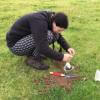




























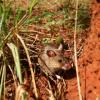

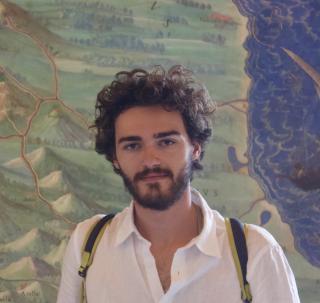



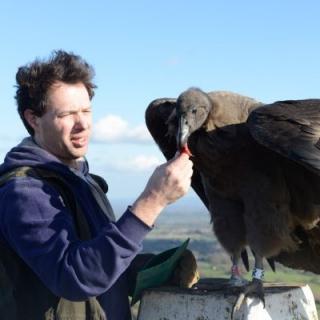

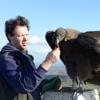





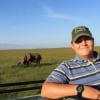
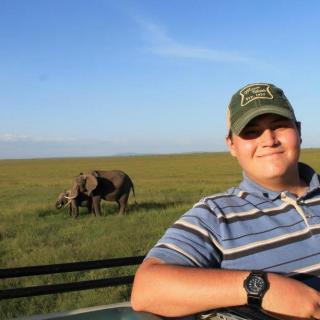




19 June 2017 3:51pm
Hey Jenny,
Thanks for sharing this, looks really interesting! In addition to WILDLABS members potentially getting involved, it'd be great to hear about some of the projects that get developed through the challenge. It looks like they're all going to be shared openly on github! Perhaps you could highlight or direct folks here to any as they emerge that you think might be particularly relevant?
Steph